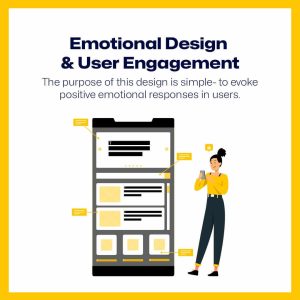Before we begin, let’s define what User Interface (UI) Design Psychology is. UI design psychology is the application of psychological principles to understand human behavior. So why is it so important to understand the design psychology of UI? Because by understanding the cognitive, emotional, and behavioral aspects of users, designers can create interfaces that are intuitive, engaging, and effective.
So let’s explore the impact of UI design decisions on user experience and the significance of incorporating psychological principles.
Perception and UI Design: Perception plays a pivotal role in UI design, shaping users’ initial impressions and interactions. Elements such as color, contrast, and visual hierarchy influence how users interpret and navigate interfaces. By leveraging these principles effectively, designers can enhance clarity, visual appeal, and usability.

Cognitive Load and Information Processing: This refers to the mental effort required to process information. UI designers must consider human cognitive limitations and create interfaces that minimize cognitive load. By organizing information, reducing complexity, and providing clear cues, designers can optimize information processing and improve overall user experience.

Emotional Design and User Engagement: The purpose of this design is simple- to evoke positive emotional responses in users. Visual aesthetics, micro-interactions, and feedback mechanisms can cultivate emotional connections, fostering user engagement and satisfaction. Designers should prioritize the creation of interfaces that elicit positive emotions and resonate with users on an emotional level.

Visual Cues and Gestalt Principles: Visual cues and Gestalt principles offer powerful tools for guiding users’ attention, organizing content, and creating intuitive interfaces. By employing techniques like proximity, similarity, and closure, designers can optimize information hierarchy and help users navigate interfaces seamlessly.

Persuasive Design Techniques: Persuasive design leverages psychological principles to influence user behavior and encourage desired actions. Concepts such as social proof, scarcity, and decision-making psychology can be employed strategically to increase conversions and drive user engagement. However, ethical considerations must be taken into account when applying persuasive design techniques.

User Feedback and Testing: User feedback and usability testing are invaluable components of UI design. Understanding the psychology behind user feedback enables designers to iterate and refine designs based on user preferences and behaviors. Incorporating user testing throughout the design process ensures that the interface meets user expectations and enhances their overall experience.

So, there you have it! UI design psychology is all about understanding human behavior and applying that knowledge to create interfaces that are intuitive, engaging, and delightful to use. By considering perception, cognitive load, emotions, visual cues, persuasive techniques, and user feedback, designers can craft interfaces that truly connect with users. Happy designing!

